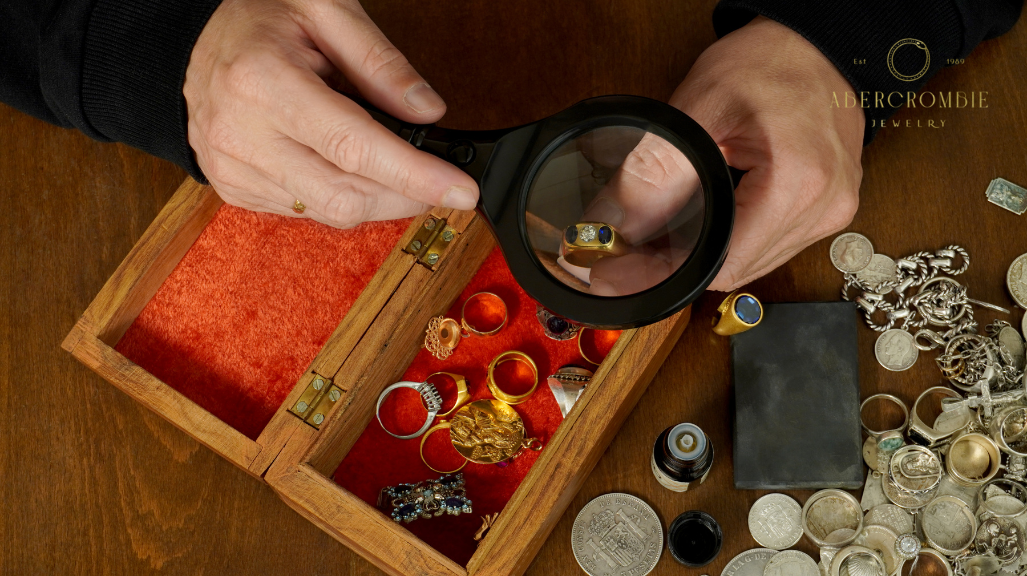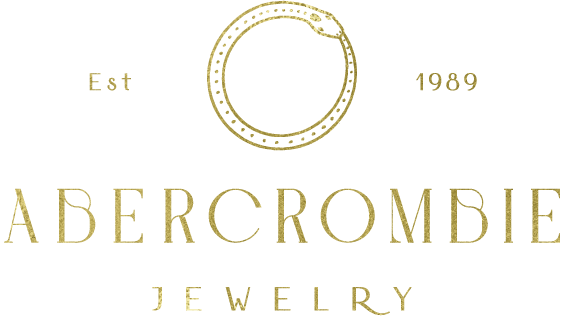Selling jewelry on consignment might seem like navigating through a maze for many, but it emerges as a savvy strategy for those looking to part with their precious pieces. This method shines with its flexibility and ease, setting itself apart in the bustling marketplace of jewelry sales. It allows sellers to reach potential buyers through established shops without the immediate need to find a buyer themselves. So, how to sell jewelry on consignment?
This unique approach offers a distinct advantage, positioning selling on consignment as an attractive option for many. Key steps in this process include selecting the right consignment shop, preparing your jewelry for sale, understanding consignment terms, and pricing your items effectively. Each of these stages is crucial and known for its role in ensuring a successful consignment experience.
Each aspect of selling jewelry on consignment comes with nuances, from cleaning and appraising your items to negotiating terms and monitoring sales. Abercrombie Jewelry will explore these elements in depth, providing a comprehensive guide to navigating the consignment landscape. This exploration offers a thorough insight into making the most of consignment opportunities, ensuring your jewelry finds a new home. At the same time, you benefit from the convenience and potential financial return.
What is selling jewelry on consignment?
Selling jewelry on consignment is a collaborative selling method where your jewelry is placed in a shop or an online marketplace, but you retain ownership until the item sells. In this arrangement, the consignment shop displays and markets your pieces; in return, they take a percentage of the sale price as their commission. This setup allows sellers to leverage the shop’s customer base and marketing efforts without the immediate need for a direct buyer.
It’s an attractive option for those looking to sell their jewelry with less upfront effort while potentially reaching buyers willing to pay a fair price for their treasures. Understanding this process is essential for anyone considering this route to sell their jewelry effectively and confidently.
Finding a consignment shop

Choosing the right consignment shop is a pivotal step in selling your jewelry on consignment. Start by exploring online directories and reading reviews to identify reputable shops that specialize in jewelry. These resources can provide a wealth of information about a shop’s reputation and other sellers’ experiences.
Additionally, recommendations from friends who have previously sold jewelry on consignment can offer valuable insights and lead you to trustworthy shops. Selecting a shop that aligns with your needs and values increases the likelihood of a successful and satisfying consignment experience.
Online directories and reviews
To find a reputable consignment shop, begin your search with online directories. These platforms are valuable resources that list jewelry consignment shops, often accompanied by reviews from individuals who have previously consigned their jewelry. Delving into these reviews can offer you a comprehensive view of a shop’s reliability, the quality of customer service, and its track record in successfully selling items akin to yours.
This step is critical in filtering your options to those shops most likely to fulfill your needs and ensure a smooth selling experience.
Recommendations from friends
Leveraging recommendations from friends with experience selling jewelry on consignment can also guide you to trustworthy consignment shops. Personal endorsements can provide unique insights not always evident in online reviews. This includes the shop’s approach to communication, flexibility in negotiation, and overall satisfaction with the consignment process.
Moreover, friends can share any challenges they face, equipping you with the knowledge to avoid similar issues.
Preparing jewelry for consignment

Before consigning your jewelry, it’s essential to prepare each piece to ensure it looks its best. Professional cleaning is a critical step, as it enhances the appearance of your jewelry, making it more attractive to potential buyers. For high-value items, obtaining an appraisal is advisable.
An appraisal provides a documented estimate of your jewelry’s value, which can be a powerful tool in setting a fair price and negotiating with the consignment shop. Properly preparing your jewelry increases its chances of selling and can significantly impact the final sale price.
Professional cleaning
Professional cleaning is a pivotal step in preparing your jewelry for consignment. This process brings out the best in your jewelry by enhancing its shine and appeal and signals to potential buyers that the piece has been meticulously maintained. A professional cleaning can unearth and eliminate dirt and tarnish that might not be visible to the naked eye, restoring the piece to its original brilliance.
Investing in this step can significantly influence both the speed at which your jewelry sells and the price it fetches.
Appraisal for high-value items
Securing an appraisal for items of considerable value is a strategic move. An appraisal provides an authoritative assessment of your jewelry’s market value, considering its materials, craftsmanship, and current demand. This formal estimate helps establish a fair and realistic price and acts as a valuable tool during negotiations with the consignment shop.
It assures the seller and potential buyers that the asking price accurately reflects the jewelry’s worth.
Understanding consignment terms

Grasping the terms of consignment is crucial for a smooth and profitable selling experience. Key aspects include understanding the typical commission rates, which usually range from 40% to 60%. This rate directly impacts how much you’ll earn once your jewelry sells.
Another vital term is the consignment period, often set between 60 and 90 days. This period defines the timeframe within which your items will be available for sale before you may need to retrieve them or renegotiate the terms. Being well-informed about these conditions enables you to set realistic expectations and make informed decisions throughout the consignment process, ensuring a more satisfactory outcome for all parties involved.
Typical commission rates (40%-60%)
When selling jewelry consignments, grasping the typical commission rates is fundamental. These rates usually range between 40% and 60%, indicating that the consignment shop will keep a portion of the sale price as compensation. Familiarizing yourself with these rates is pivotal for accurately calculating your potential earnings and setting your item prices appropriately.
This understanding ensures that you embark on consignment agreements with a clear perspective on the financial outcomes, making for a more informed and beneficial arrangement.
Consignment period (60-90 days)
Another crucial term is the consignment period, typically 60 to 90 days. This timeframe outlines how long your jewelry will be on display before you consider retrieving it or discussing further terms with the consignment shop. Recognizing the ins and outs of this period is essential for effectively planning your consignment strategy.
It influences the duration of your items’ commitment to the consignment process and helps set realistic expectations on when you might anticipate returns, ensuring a smoother consignment experience.
Pricing your jewelry

Setting the right price for your jewelry is a delicate balance that requires careful consideration. It involves researching similar items to gauge the market value and understanding how your piece compares in terms of quality, rarity, and demand. Additionally, it’s important to factor in sentimental value, which can sometimes inflate your perceived value of the piece.
However, remember that sentimental value may not translate to higher market value. Striking the right balance ensures that your jewelry is priced competitively, attracting potential buyers and receiving a fair return for your cherished items. This step is crucial for a successful consignment sale, as it directly influences buyer interest and the likelihood of your jewelry finding a new home.
Research similar items
Researching similar items is essential when setting a price for your jewelry on consignment. This step involves examining pieces that share similarities in materials, craftsmanship, age, and design to gauge market value. Exploring online marketplaces, reviewing auction results, and checking other consignment shop listings can offer valuable insights.
This comprehensive research ensures that your pricing aligns with the current market trends, making your jewelry competitive and appealing to prospective buyers.
Factor in sentimental value
Factoring in sentimental value requires a delicate balance. While the emotional significance of a piece can elevate its importance to you, it’s crucial to acknowledge that such value might not increase its market price. Sentimental value is inherently subjective and personal, often not mirrored in the item’s market valuation.
Recognizing this distinction allows for setting a realistic and aligned price with market expectations, thereby improving the chances of a successful consignment transaction.
Negotiating with the shop

Entering negotiations with the consignment shop is a critical phase where clear communication and understanding of terms can significantly impact the outcome. It’s important to discuss and agree on the duration of the consignment, ensuring both parties have clear expectations about how long the jewelry will be available for sale. Additionally, understanding the shop’s pricing policy is crucial.
This includes how prices may be adjusted over time and who has the final say on accepting offers. Being well-informed and prepared for these discussions can lead to more favorable terms, enhancing the potential for a successful sale. Negotiating requires a balance of assertiveness and flexibility, aiming for a partnership that benefits both you and the consignment shop.
Duration of consignment
Negotiating the duration of consignment is a crucial step before finalizing your agreement with a consignment shop. This term sets the timeframe for how long your jewelry will be displayed and available for purchase. A clear agreement on this duration is vital, as it affects the commitment of your items to the consignment process.
Establishing a consignment period that meets your expectations and the shop’s policies creates a transparent and mutually beneficial relationship. It also provides a defined timeline for assessing the consignment’s success.
Shop’s pricing policy
A thorough understanding of the shop’s pricing policy is essential to the negotiation process. This policy outlines the mechanisms for price adjustments on your jewelry during the consignment term, including markdowns or promotional sales. Clarifying these terms beforehand ensures you maintain some control over how your pieces are priced, safeguarding against them being undervalued or sold at a price that doesn’t align with your expectations.
Striking a balance between your jewelry valuation and the shop’s sales strategy is key to a fruitful consignment partnership.
Monitoring sales

Once your jewelry is on consignment, actively monitoring sales is essential. This involves setting up weekly or monthly check-ins with the consignment shop to track the progress of your items. These regular updates inform you about how your jewelry performs and whether any adjustments need to be made, such as price changes or additional marketing efforts.
Additionally, discussing sales strategies with the shop can provide insights into how to better position your items for sale. Staying engaged in the sales process keeps you informed and enhances the likelihood of a successful consignment outcome.
Weekly or monthly check-ins
Implementing a weekly or monthly check-in schedule with the consignment shop is a strategic approach to staying updated on the sales progress of your consigned jewelry. These consistent meetings are key to gaining insights into how your items are performing, gauging customer interest, and evaluating the competitiveness of the pricing. Active participation through these check-ins ensures you remain well-informed about your jewelry’s status, facilitating timely adjustments that could enhance its appeal to potential buyers.
Discussing sales strategies
Discussing sales strategies with the consignment shop is pivotal in optimizing the visibility and desirability of your consigned pieces. Engaging in these conversations opens avenues to better understand the market dynamics, promotional efforts, and necessary tweaks to attract a broader audience. It’s a collaborative effort to identify the most effective ways to showcase and market your jewelry, considering the shop’s clientele and sales avenues.
These strategic discussions can lead to innovative solutions that significantly improve the chances of a successful sale, aligning the interests of both you and the consignment shop.

